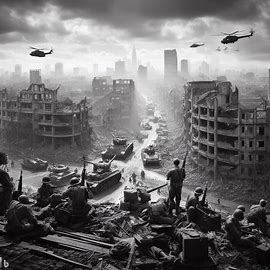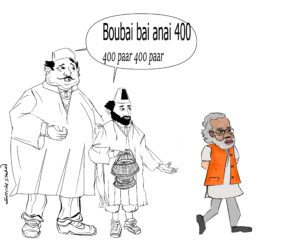Israel Palestine conflict
The Israel-Palestine conflict is a long-standing and complex political and territorial dispute primarily between Israelis and Palestinians. The conflict has deep historical roots and has resulted in numerous wars, uprisings, and peace processes over the years. Here is an overview of the conflict’s key events since 1947
- UN Partition Plan (1947): In 1947, the United Nations proposed a partition plan to divide Palestine into separate Jewish and Arab states, with Jerusalem as an international city. The plan was accepted by Jewish leaders but rejected by Arab leaders, leading to increased tensions.
- Israeli Declaration of Independence (1948): Israel declared independence on May 14, 1948, leading to the first Arab-Israeli war. Arab states intervened, resulting in a series of conflicts that lasted until 1949. The war ended with the signing of armistice agreements and the establishment of the borders known as the Green Line.
- Suez Crisis (1956): Israel, along with France and the United Kingdom, invaded Egypt in response to the nationalization of the Suez Canal by Egyptian leader Gamal Abdel Nasser. Pressure from the United States and the Soviet Union led to a withdrawal of forces.
- Six-Day War (1967): In 1967, Israel fought a war against Egypt, Jordan, and Syria. Israel emerged victorious, occupying the West Bank, East Jerusalem, Gaza Strip, Sinai Peninsula, and Golan Heights. The UN Security Council passed Resolution 242, calling for Israel’s withdrawal from the territories in exchange for peace and security.
- Yom Kippur War (1973): Egypt and Syria launched a surprise attack on Israel during the holiest day in Judaism, Yom Kippur. After initial Arab successes, Israel regained the initiative and a ceasefire was brokered by the United States and the Soviet Union.
- Camp David Accords (1978) and Oslo Accords (1993): Egypt became the first Arab country to officially recognize Israel by signing the Camp David Accords in 1978. In 1993, Israel and the Palestine Liberation Organization (PLO) signed the Oslo Accords, outlining a peace process and the eventual creation of a Palestinian state.
- Second Intifada (2000-2005): A period of intensified Palestinian-Israeli violence, resulting in thousands of casualties on both sides.
- Gaza Disengagement (2005): Israel unilaterally withdrew its forces and settlers from the Gaza Strip, although it maintained control of its borders, airspace, and coastline.
- Gaza Wars (2008-2009, 2012, and 2014): Several conflicts between Israel and Hamas, the militant group in control of the Gaza Strip, resulted in significant casualties and damage on both sides.
- Recent Developments: The conflict has persisted, with occasional outbreaks of violence, protests, and attempts at peace negotiations. The status of Jerusalem, borders, the right of return for Palestinian refugees, and Israeli settlements in the West Bank remain major points of contention.
Efforts toward a lasting peace continue, but reaching a comprehensive agreement that satisfies both parties has proven to be exceptionally challenging. The situation remains fluid, and new developments continue to shape the dynamics of the conflict.

How Jewish settlements took place? Israel Palestine conflict
The establishment and expansion of Jewish settlements in the occupied Palestinian territories, including the West Bank and East Jerusalem, have been a contentious issue and a major point of contention in the Israel-Palestine conflict. Jewish settlements have been built on land that Palestinians consider part of their future state. The process of how these settlements took place is complex and has evolved over the years. Here are some key points to understand how Jewish settlements were established:
- Post-1948: After the 1948 Arab-Israeli War, Israel was established, and a significant number of Jewish refugees from various countries settled in the newly formed state. The Israeli government encouraged Jewish immigration and established communities, including in areas that were formerly inhabited by Palestinian Arabs who fled or were expelled during the war.
- 1967 Six-Day War: During the Six-Day War, Israel captured the West Bank, East Jerusalem, Gaza Strip, Sinai Peninsula, and Golan Heights. In the aftermath of the war, Israel began establishing settlements in these newly occupied territories. The construction of settlements in the West Bank and Gaza Strip was controversial from the beginning and has been widely criticized by the international community.
- Legal and Political Framework: Israel’s government has supported the establishment of settlements through various legal and political measures. These include allocating state resources, providing financial incentives, and offering security to settlers. The Israeli government has also declared certain areas as state land, allowing for settlement construction.
- International Law: Many in the international community, including the United Nations, view Israeli settlements in the occupied territories as a violation of international law. The Fourth Geneva Convention prohibits an occupying power from transferring its population into the territory it occupies. Israel disputes this interpretation, arguing that the territories are disputed and not occupied.
- Settlement Growth: Over the years, the number of Jewish settlers in the West Bank, including East Jerusalem, has grown significantly. Settlements range from small outposts to large urban communities. The growth of settlements has often led to tension and violence between settlers and Palestinians.
- Government Support: Israeli governments, both right-wing and left-wing, have provided varying degrees of support for settlement construction. Some Israeli leaders have actively promoted settlement expansion, while others have taken steps to limit it. Settlement growth has often been a contentious issue in Israeli politics.
- Peace Process: The establishment and expansion of settlements have been a major obstacle in the Israeli-Palestinian peace process. The presence of settlements makes it challenging to establish a contiguous and viable Palestinian state, as envisioned in various peace proposals.
Despite international criticism and ongoing peace efforts, settlements continue to expand in some parts of the occupied territories, creating ongoing challenges for resolving the Israel-Palestine conflict.
How and why Jews assembled in Palestine?
Jewish immigration and settlement in Palestine, particularly during the late 19th and early 20th centuries, can be attributed to several historical, religious, and political factors:
- Zionism: Zionism is a political movement that emerged in the late 19th century, advocating for the establishment of a Jewish homeland in Palestine. The founder of modern political Zionism, Theodor Herzl, argued for the creation of a Jewish state to ensure the safety and well-being of Jewish people, particularly in the face of rising anti-Semitism in Europe.
- Religious Significance: For Jews, Palestine has significant religious and historical importance. It is considered the Promised Land in Jewish religious texts, and Jerusalem holds religious significance for Jews, Christians, and Muslims alike. The idea of returning to their ancestral homeland resonated deeply with many Jews.
- Persecution and Anti-Semitism: Throughout history, Jews faced persecution in various parts of the world, including Europe and Russia. Pogroms, discriminatory laws, and violence against Jews pushed many to seek refuge elsewhere. Palestine, under Ottoman rule during this period, became one of the destinations.
- British Mandate: After World War I, Palestine came under British rule through the League of Nations mandate system. The Balfour Declaration of 1917, in which the British government expressed support for the establishment of a “national home for the Jewish people” in Palestine, encouraged Jewish migration to the region.
- Economic Opportunities: Some Jews were attracted to Palestine by economic prospects, including agricultural opportunities. Organizations like the Jewish National Fund purchased land for Jewish settlement, encouraging agricultural development.
- Holocaust and Displaced Persons: The horrors of the Holocaust in Europe led to a massive displacement of Jewish survivors. After World War II, many Jewish displaced persons sought refuge in Palestine. The images and stories of Holocaust survivors added urgency to the Zionist cause.
- United Nations Partition Plan (1947): The United Nations proposed a partition plan in 1947 to divide Palestine into separate Jewish and Arab states, with Jerusalem as an international city. Jewish leaders accepted the plan, leading to increased Jewish immigration and the establishment of the State of Israel in 1948.
These factors, among others, contributed to the assembly of Jews in Palestine, leading to the eventual establishment of the State of Israel in 1948. However, it’s essential to note that the establishment of Israel and the subsequent displacement of Palestinians resulted in a complex and ongoing conflict that continues to shape the region’s politics and society today.
Does Israel State existed before British Mandate in Palestine?
No, the modern State of Israel did not exist before the British Mandate in Palestine. The establishment of the State of Israel occurred on May 14, 1948. Before that, the region was under Ottoman rule for centuries. The concept of a modern Jewish state in Palestine gained significant traction during the late 19th and early 20th centuries, primarily through the Zionist movement, which aimed to establish a national homeland for the Jewish people.
During World War I, the British and French made a series of agreements, including the Sykes-Picot Agreement and the Balfour Declaration of 1917, which paved the way for the post-war division of the Ottoman Empire’s territories, including Palestine, between the British and the French. The League of Nations granted Britain the mandate to govern Palestine after the war.
Under British Mandate (1920-1948), Jewish immigration to Palestine increased significantly. Jewish and Arab communities coexisted but were often in conflict over issues related to land ownership and national identity.
On November 29, 1947, the United Nations General Assembly passed the United Nations Partition Plan for Palestine, recommending the partition of Palestine into separate Jewish and Arab states, with Jerusalem as an international city. While Jewish leaders accepted the plan, Arab leaders rejected it. Subsequently, the British Mandate ended on May 14, 1948, and the State of Israel was officially established. This event marked the beginning of the Arab-Israeli conflict, which continues to shape the region’s dynamics to this day.

- Escalation of Violence (May 2021): In May 2021, tensions between Israelis and Palestinians escalated dramatically. The conflict in Gaza resulted in a significant number of casualties, including civilians, and extensive damage to infrastructure. The violence was triggered by clashes in Jerusalem, particularly around the Al-Aqsa Mosque compound, one of the holiest sites in Islam, and a focal point for Palestinian identity and nationalism.
- Ceasefire: After intense international pressure, a ceasefire was brokered between Israel and Hamas, the militant group in control of Gaza, in May 2021. The ceasefire ended 11 days of hostilities but did not address the underlying issues of the conflict.
- Political Developments: The political landscape in both Israel and Palestine has seen significant changes. In Israel, there were multiple elections and political gridlock, with a series of fragile coalition governments. In Palestine, internal divisions persisted between Fatah, which governs the West Bank, and Hamas, which controls the Gaza Strip.
- Settlement Expansion: Israel’s settlement construction in the West Bank, considered illegal under international law, continued to be a major point of contention. The expansion of settlements makes it challenging to establish a contiguous and viable Palestinian state.
- COVID-19 Pandemic: The COVID-19 pandemic added another layer of complexity to the situation, affecting both Israeli and Palestinian populations. Efforts to combat the pandemic were hindered by the ongoing political and security challenges.
- Peace Initiatives: Efforts to restart peace talks have been sporadic and largely unfruitful. Various international actors, including the United States, have attempted to mediate peace negotiations, but a comprehensive resolution has remained elusive.
The latest development of Israel and Palestine Conflict
The latest development in the conflict is a surprise attack by Hamas, the Islamist group that controls the Gaza Strip, on Israel on October 7, 2023. Hamas launched a massive barrage of rockets from Gaza into southern and central Israel, killing dozens of civilians and causing widespread panic.
Hamas also infiltrated Israel by land, air, and sea, taking hostages and engaging in fierce battles with Israeli soldiers. Hamas named the operation “Al-Aqsa Flood”, referring to the holy site in Jerusalem that is revered by both Muslims and Jews.
Hamas said the attack was a response to Israel’s ongoing blockade of Gaza, its expansion of settlements in the West Bank, and its violations of Palestinian rights in Jerusalem.

- The perspective of Hamas: Hamas claims that it is fighting for the liberation of Palestine from Israeli occupation and oppression. Hamas views Israel as an illegitimate state that has no right to exist on Palestinian land. Hamas also accuses Israel of violating international law and human rights by imposing a siege on Gaza, building illegal settlements in the West Bank, demolishing Palestinian homes, arresting and killing Palestinian activists, and restricting access to holy sites in Jerusalem.
- The perspective of Israel: Israel argues that it is defending itself from terrorist attacks by Hamas and other militant groups. Israel considers Hamas as a radical organization that seeks to destroy Israel and replace it with an Islamic state. Israel also accuses Hamas of using civilians as human shields, firing rockets indiscriminately at Israeli population centers, exploiting humanitarian aid for military purposes, and rejecting any peaceful solution to the conflict.
- The perspective of the international community: The international community has expressed concern and condemnation over the escalation of violence between Israel and Hamas. Many countries have called for an immediate ceasefire and a return to negotiations based on the two-state solution.
- The United Nations Security Council has held several emergency meetings to discuss the crisis and urge both sides to respect international humanitarian law and protect civilians. The United States has reaffirmed its support for Israel’s right to self-defense while also urging restraint and de-escalation.
- China has criticized the US for blocking a joint statement by the Security Council that would condemn both sides for the violence. Russia has proposed a diplomatic initiative that would involve Egypt, Jordan, Saudi Arabia, Turkey, Iran, and Qatar as mediators.
In conclusion, the latest development in the Israel-Palestine conflict is a result of decades of unresolved grievances, mistrust, and hostility between the two sides. The surprise attack by Hamas on Israel has caused unprecedented casualties and damage on both sides and has raised fears of a full-scale war. The international community has been trying to intervene and mediate a peaceful solution but has faced challenges and obstacles from both sides as well as from regional and global powers.
India’s Moon Mission- Chandrayaan-3
What is the Israel-Palestine conflict about?
The Israel-Palestine conflict is a long-standing and complex political and territorial dispute primarily between Israelis and Palestinians. The conflict has deep historical roots and has resulted in numerous wars, uprisings, and peace processes over the years. Here is an overview of the conflict’s key events since 1947
How Jewish settlements took place?
The establishment and expansion of Jewish settlements in the occupied Palestinian territories, including the West Bank and East Jerusalem, have been a contentious issue and a major point of contention in the Israel-Palestine conflict. Jewish settlements have been built on land that Palestinians consider part of their future state. The process of how these settlements took place is complex and has evolved over the years. Here are some key points to understand how Jewish settlements were established:
How and why Jews assembled in Palestine?
Jewish immigration and settlement in Palestine, particularly during the late 19th and early 20th centuries, can be attributed to several historical, religious, and political factors:





